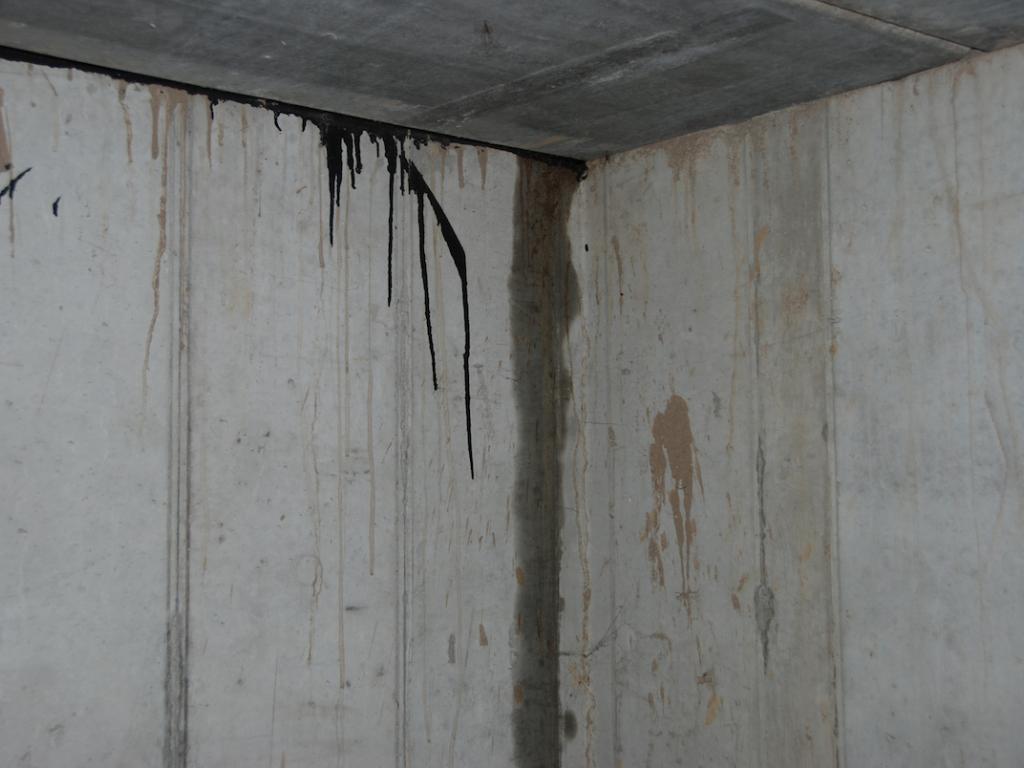
The first thing you might notice is a small hairline crack in your basement floor or wall. Winter comes and winter goes and that crack grows just a little, and then that happens again and again. If there is a crack or other fissure, water will fill it and when the temperature drops, as it invariably does in winter, the crack will grow. Now that crack has grown to a point where the spring melt off or excess water from a rain storm has found a path into your basement.
Water takes the easiest path and will flow and then collect at the lowest point on your property. Usually the that lowest point is your foundation – the very structure on which the integrity of your home should be solid. You might not even see the route the moisture has taken especially if your basement floor has carpeting or tile flooring. Be sure, however, if the water been able to get in once, it will do so again.
Check for potential problems
Even though you have drainage systems built into your basement, there are times when those systems become overwhelmed or break down due to age. Perhaps you aren’t even aware that previous owners have covered a drain with carpeting, making it inoperable. You need to be checking regularly that there are no faults or cracks in the basement flooring or walls, that drains are clear and properly able to draw away water. You should also make sure the soil around your property is sloped away from your basement walls so that there isn’t a grade that encourages water to trickle down or gather at the base of your foundation.
Once water enters your basement it starts to damage the masonry and flooring, wall coverings, furniture, electronics, appliances and other items you have stored in your basement. It can be expensive to have to replace all these items. Even if you don’t see water damage right away, a dank odour will tell you that you have a problem because unattended moisture can lead to the build-up of bacterial spores that can create mildew or mould. Mould can be dangerous to the health of your family especially if anyone already suffers from asthma or other respiratory conditions. If water is seeping through the walls of your basement you might see a chalky residue on the walls which indicates minerals are being brought to the surface.
Waterproofing
The best method to avoid problems with water in your basement is to have it waterproofed, ideally before you have your basement area finished or begin creating extra living space there. Even if you wait until you have obvious problems, there are companies like Benchmark Waterproofing who can help you get sorted out. The experts at Benchmark will go to your home to fully examine the foundation for cracks or fissures. They will look around the outer walls to determine if there is a problem with the slope of the soil against your home or landscaping features that are creating a drainage issue. They’ll check the water spouts and eavestroughing to see if these are draining to the base of your home and allowing water to pool at the base.
Cracks are not only caused by water, you might be in a neighbourhood that has experienced a lot of settling of the soil around homes. You may be living near a large construction site which has blasted through bedrock or dug deep recesses that have caused a ripple effect on the properties around it.
If there are cracks, they will repair them with an expandable epoxy and then seal the masonry to ensure water cannot get into the basement again. Once the repairs are complete and your drainage system updated, your basement will be covered with a rubber membrane to protect it from further water damage. You can choose to have interior or exterior basement waterproofing.
Exterior water proofing requires a trench to be dug around the outer rim of your foundation walls down to the footing. The trench is shored to protect both the workers and to stop the site from further erosion. The walls are repaired and the membrane added. The trench is filled in again and the site returned to its former appearance.
Interior water proofing involves the trench being dug in your basement with repairs being done to the cracks, the membrane being applied and then concrete used to fill in the trench. Your floor level is replaced.
Outcomes
While both methods may sound disruptive, your primary concern should be to protect the integrity of your home’s foundation – to provide a solid base for comfortable living. Don’t wait until you have a major problem. If you see any evidence of cracks in your basement, get them repaired and your basement waterproofed.
